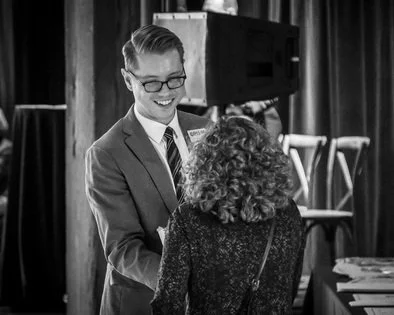
Teaching
My philosophy on teaching.
Goal
As a teacher, my goal is to facilitate student-centered growth and development in the realms of design thinking, concept development, creativity, and visual storytelling. The ability to communicate visually is imperative to all aspects of art and design, from product to expression. Cultivating the Growth Mindset developed by Carol Dweck and clarifying goals for students, such as winning competitions at the school, city, state, and national levels is imperative to motivating students, particularly students pursuing lives and careers in the visual arts, who need dynamic portfolios.
Technology
I studied a broad range of philosophies of education while earning a Master of Science in Education from Indiana University. I met with Gilbert Clark, the creator of Discipline Based Arts Education (DBAE) to fully understand his methodology in teaching the elements and principles of design. While Clark's philosophy has stood the test of time, I’ve also been influenced by the Teaching for Artistic Behavior (TAB) theory where students’ choices are paramount, Socially Engaged Arts Education, which capitalizes on relative aesthetics and identity within culture, and historical educators such as the late Josef Albers and Robert Henri.
Growth Mindset
At a residency at the Museum of Contemporary Art.
Community
My interdisciplinary skill set in art-making and design pulls broadly and concisely from methods in history, the humanities, visual culture, and technology. Digital technology is central to teaching, which opens doors to new ways of being creative while developing digital literacy in emerging technologies. Traditional methods are equally as useful but in a different way, offering opportunities for the physical manipulation of materials and translating ideas into physical objects.
Aside from the range of philosophies guiding my practice, I am constantly learning about innovative approaches and methods of art and design education through opportunities, such as writing curriculum for the Museum of Contemporary Art and as an advisor for the Visual Art & Design Teaching Standards for the state of Illinois. My investment in learning best practices comes from my dedication to helping students connect with art and design in ways that appeal to their individual learning styles, and to become the best educator I can be.
Differentiation
One of the greatest strengths art and design offers schools and organizations is community engagement. Connecting students to competitions, exhibitions, publishing opportunities, and other contemporary platforms such as murals and websites, student work is awarded and celebrated to encourage their investment in careers in the arts. In my role as a board member and Portfolio Coordinator of ArtConnectEd (501(c)(3)), I helped secure over $120 million dollars in tuition scholarship offers from colleges and universities to students in the state of Illinois.
Consistency
Awarding scholarships at the Bridgeport Art Center.
Influences
My courses take a multitude of approaches, which coincides with the level of the course. For beginning courses, a process-oriented approach is important to build a culture to instill a sense of a collective while we focus on vocabulary and creative problem-solving. I begin by presenting the skills, materials, problems to be solved, and how I will grade projects, followed by a discussion where we deconstruct what was presented to find places for innovation. I then follow up with the students individually as they brainstorm and begin planning projects, offering assistance and guidance. In intermediate courses, I emphasize the creative process and how to make work that explores issues in the world around and within us. Conversations begin projects with more open-ended inquiry-based questions students interpret and explore. Advanced-level courses emphasize breadth, concentration, and quality, with students creating work using a wide variety of media to form cohesive portfolios.
At all levels, I often bring multiple students into discussions informally and formally through critique strategies, which broaden perspectives and to build a culture of students constructively helping one another grow and develop as creative thinkers. Throughout courses, students are led by examples of the instructor’s own work, former student work, and examples from history. At the end of each project, student work is assessed by peers, by the artist or designer themselves, and by myself using criteria established at the beginning, while being mindful of student growth and development.

